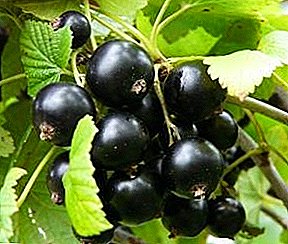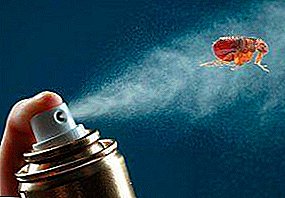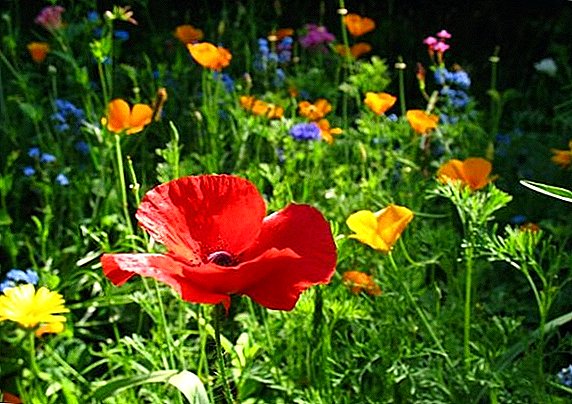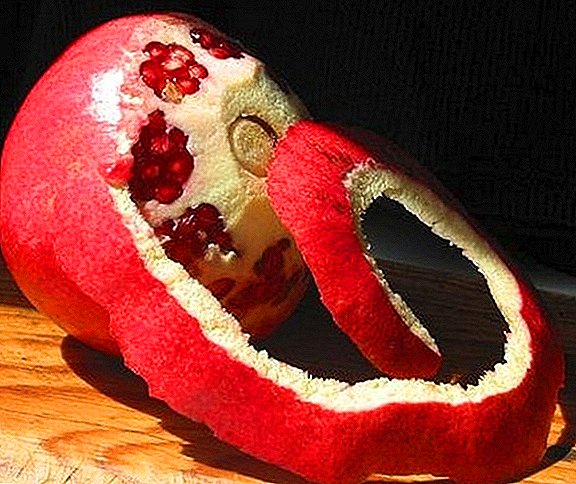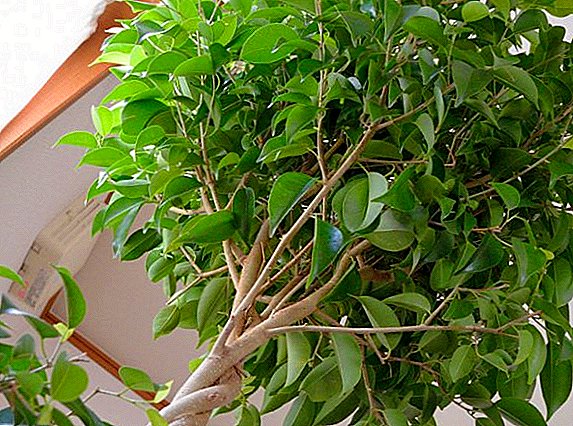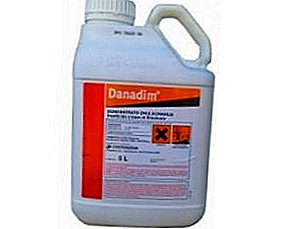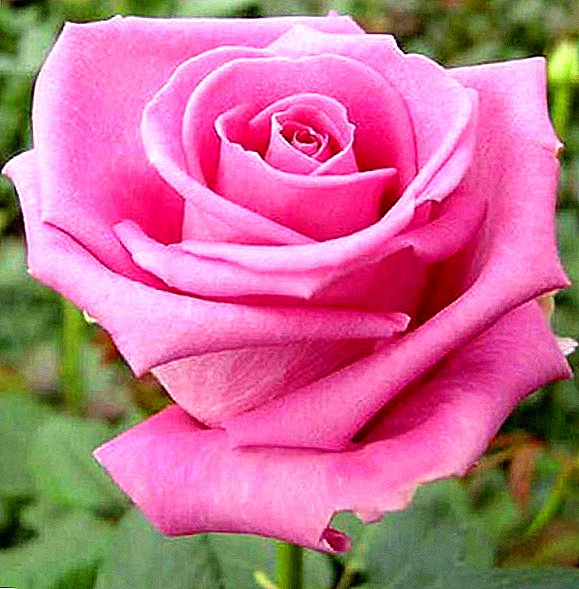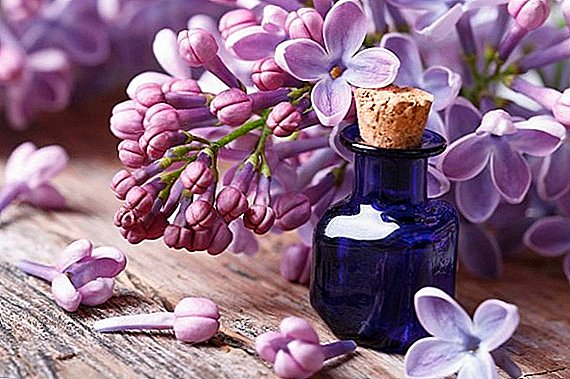 Lilac is a habitual plant for our places. Its beauty and delicate fragrant aroma has long been described in classic works of Russian literature. But few people know that as a symbol of spring and the forerunner of summer, lilac is also a treasure trove of beneficial substances and is successfully used in traditional medicine.
Lilac is a habitual plant for our places. Its beauty and delicate fragrant aroma has long been described in classic works of Russian literature. But few people know that as a symbol of spring and the forerunner of summer, lilac is also a treasure trove of beneficial substances and is successfully used in traditional medicine.
Common lilac
Common lilac (Latin Syringa vulgaris) is a perennial ornamental plant of the Olive family with a lush and fragrant flowering, in most cases planted to decorate the landscape.
Lilac is a real doctor and it has excellent healing properties. Familiarize yourself with the beneficial and harmful properties of lilac.The area of its natural growth is the countries of Asia and the Far East, Eastern Europe, and the Balkan Peninsula.

Botanical description
Common lilac in its form is a multi-trunk shrub. Plant height depends on the growing conditions and can be from 2 to 8 m. At the maximum height, the diameter of each stem can reach 20 cm. The plant belongs to the deciduous type of shrubs. Green leaves heart-shaped with a pointed apex.
Did you know? The most fragrant aroma of lilac exudes only in warm sunny days.

Flowering occurs in complex inflorescences - panicles pyramidal shape. The flowers are small, in size do not exceed 1 cm. The color of the flowers can be white, purple or lilac.
The flowering period falls on the period from the beginning of May to the beginning of June; the period of flowering is no more than 20 days.
The first flowering is possible only in the fourth year after planting and continues throughout the growing season, which can reach 60-100 years. 
Reviews from the network of lilacs
In many villages, this shrub is used as a hedge - its dense crown from ground to top very well protects the site from prying eyes. It reproduces very easily - we dig up the extreme small twigs from the bush and plant it at the right place, after a few years you will have a hat. At our house, a lilac plant was planted on the day of the birth of my daughter, after 5 years the bush had already grown 2 meters high.
But I was also taught one wisdom - that the bush was more lush and spreading, be sure to tear off the branches with flowers. All the branches you still will not break, and the lilac will delight you not only on the street, but also at home.


Beneficial features
Despite the rapid development of the medical industry, traditional medicine recipes are still very popular. Lilac in these recipes is not very common, but it has many positive qualities. Flowers, leaves, buds and shrub bark are used in folk recipes, and despite the fact that these components are part of the same plant, they have different properties:
- lilac color in the form of infusions are useful in diseases of the kidneys, bladder, lungs;
- leaves have antipyretic and antispasmodic properties, effective for headaches;
- An ointment made from lilac leaf juice effectively treats arthritis, rheumatism and neuralgia;
- decoction of the kidneys harvested in the spring helps to reduce blood sugar levels in diabetics and to facilitate the overall course of the disease;
- Tea from the bark of the plant is an excellent antiseptic and helps to relieve inflammation. It is also a diaphoretic remedy for colds.

Important! The chemical composition of lilac has been little studied, so official medicine does not recommend independently using the plant in treatment with unconventional methods.The plant has special properties in the form of alcohol tincture and is suitable for both indoor and outdoor use. Tincture is used in such diseases:
- lower back pain;
- gout;
- salt deposits in the joints;
- rheumatism;
- arthrosis;
- arthritis;
- angina;
- laryngitis;
- headaches, severe migraines;
- inflammation of cuts, wounds and bruises;
- phlebeurysm.

Rules of harvesting lilac for making tincture
For the maximum benefit of raw materials it is important to properly and timely prepare. The plant blooms at the beginning of May - this is the time for harvesting the flowers until their disclosure. There are no special recommendations about the color of flowers, but preferably white.
To collect color, a branch with an inflorescence is cut (or broken off), and then suspended to dry. After drying, the color should be separated from the inflorescence and placed in an airtight container.  Collection of lilac flowers
Collection of lilac flowers
The leaves are harvested in June, when flowering is over and all nutrients are directed to the development of the plant itself, and not to the flowering process. Freshly picked leaves are washed and dried on any horizontal surface in a dark room after which they are also placed in an airtight container.
The kidneys are cut off during the swelling period, after which they are also dried in a dark place and packed for storage. The bark is cut off only from young shoots and dried in a standard way.
Important! The lilac root contains the substance syringin, which is capable of releasing poison in the chemical compounds - hydrocyanic acid, therefore its use in traditional medicine recipes is not recommended.

Useful properties of harvested dry raw materials are saved no more than 2 years.
The collection of raw materials is best done on a dry and sunny day away from the roads or the neighborhood of factories, industrial plants or livestock farms.
For the preparation of alcohol tinctures, fresh raw materials are needed, but in order to prepare leaves and color for preparing infusions, tea and various decoctions in the offseason, fresh raw materials must be dried to complete drying in a dark and dry room, then placed in a container and cleaned in a dark cool place for storage. 
How to prepare a lilac tincture on alcohol (vodka): a classic recipe
A universal way of cooking is a classic recipe tincture. For cooking will need:
- fresh color (or a mixture with leaves) - 100 g;
- alcohol (or vodka) - 1 liter.
Read how to make a tincture of propolis, wax moth and goldenrod.Mix the ingredients in a glass jar and tightly close the lid. Insist the mixture for 3 weeks, then strain and store in a dark place. The universality of the recipe is explained by the fact that having prepared the tincture in the classical way, it can be taken to treat all the above mentioned diseases, but only in different dosages and in different ways.
 Preparation of flowers of a lilac for tincture
Preparation of flowers of a lilac for tincture
How to take tincture
The use of tinctures for the treatment of diseases may be internal or external way. The amount of the dose taken and the frequency of administration are also individual for the treatment of each individual disease.
At high temperature
To reduce the temperature of 2 tbsp. tinctures must be added to hot tea with honey. Take 3 times a day before meals. Simplify the reception can be a three-time use of 50 grams of tincture before meals. You need to take the first 3-5 days. 
For lower back pain
For lower back pain will help the external use of tincture. Sore spots are rubbed twice a day to relieve pain syndrome. It is necessary to make grinding before the complete cessation of pain.  The use of tincture of lilac for back pain
The use of tincture of lilac for back pain
Kidney disease
For renal diseases, 20 drops of tincture are taken 3 times a day for 1 month. Simplify the use by adding the same amount of tincture to the tea. 
For wounds and bruises
When wounds and bruises classic recipe is used as compresses. For the procedure, a piece of gauze must be moistened in a lilac tincture heated to 45 ° C and put on the affected area, the top should be covered with a plastic bag (or food film) and covered with a warm towel. In case of wounds, a compress should be held for 20 minutes, and in case of bruises it can be left on all night.  Lilac tincture compresses
Lilac tincture compresses
With angina or laryngitis
In case of sore throat and laryngitis, gargling is indicated with a tincture-based solution in a ratio of 1 tbsp. tincture 0.5 cups of warm boiled water. It is necessary to rinse the throat every 3 hours until full recovery.
In addition to the lilac tincture, in case of sore throat, physalis, celandine, oxalis, raspberries, honey in May, Indian onions, horseradish, sage meadow grass, cranberries, linden, ivy-shaped budra, soapwort (saponaria), rose and oak bark are also used.

With migraines
When migraines are used externally. Cotton pad moistened with tincture, you must wipe the frontal part and temples. The severity of pain will decrease after 5 minutes. If the headache does not pass, the procedure can be repeated after 15-20 minutes.
Did you know? The gentle and fragrant smell of lilac has a beneficial effect on the cardiovascular system, removing attacks of tachycardia and arrhythmia.
When coughing
For the treatment of a protracted cough, the addition of 1 tbsp is recommended. tinctures in a cup of hot tea before bedtime. Reception can be simplified by first drinking 1 tbsp. tinctures, and then a cup of hot tea. Make a reception need for 7-10 days.
For the treatment of cough also used such plants: anise, ivy, vervain medicinal, nyvyanik, wormwood, rutabaga, horseradish, saxifrage, cantaloupe and cherry plum.

With osteochondrosis, arthrosis and arthritis
For osteochondrosis, arthrosis and arthritis, use 20 drops of tincture 3 times a day, regardless of food intake for 3 months.
With gout and salt deposits in the joints
For gout and salt deposition in the joints, you need to take 30 drops of the classic tincture of tincture 3 times a day for 3 months.
With varicose veins
With varicose veins, internal and external use of the tincture is effective. Consumption inward is 15-20 drops before each meal 3-4 times a day. External reception consists in the use of alcohol-based compresses, for this the affected area is abundantly moistened with tincture, after which polyethylene is used and a warm wrap for the night. For better effect, these methods can be combined.
Like lilac tincture, varicose veins are also used in: Adam's apple (maclura), horse chestnut, camelion, fungus, radish, goose fat, chard, indoor grapes, pumpkin oil, chestnut honey, macadamia nut and shepherd's bag.
 The result of the use of tincture of lilac
The result of the use of tincture of lilacContraindications
Despite all the useful qualities of lilac tincture, there are some limitations and contraindications for its ingestion:
- children under the age of 12;
- pregnant women and women during breastfeeding;
- renal dysfunction (renal failure, glomerulonephritis);
- disorders of the gastrointestinal tract and chronic diseases of the abdominal organs;
- menstrual dysfunction (or amenorrhea).

Important! In the presence of chronic diseases of the internal organs before the use of tincture should consult with your doctor about possible complications during the main disease.It is also important to remember that the lilac bouquets in the rooms themselves lead to headaches and high blood pressure. Therefore, they should not be kept in a room to sleep.
The fragrant and lush flowers of lilac delight us every spring, but in addition to this, lilac also has a tremendous effect on the human body as a medicine in traditional medicine recipes. Cooked classic tincture recipe is effective against many diseases with different ways of use. The main thing is to strictly follow the recommendations of the doctor and dosages.
Reviews from the Internet about the benefits of tincture of lilac

I usually add such an infusion in warm water to make fragrant and extremely beneficial for the skin. Just a couple of tablespoons for one person. It takes no more than 10 minutes to lie in the bathroom so that the skin is enriched with useful substances from lilac.
Lilac tincture has good moisturizing properties, and can also be used for aroma-scrubbing, if applied very little after washing your hair on the comb itself.
In general, this is a great tincture, and it is inexpensive and accessible to everyone!



